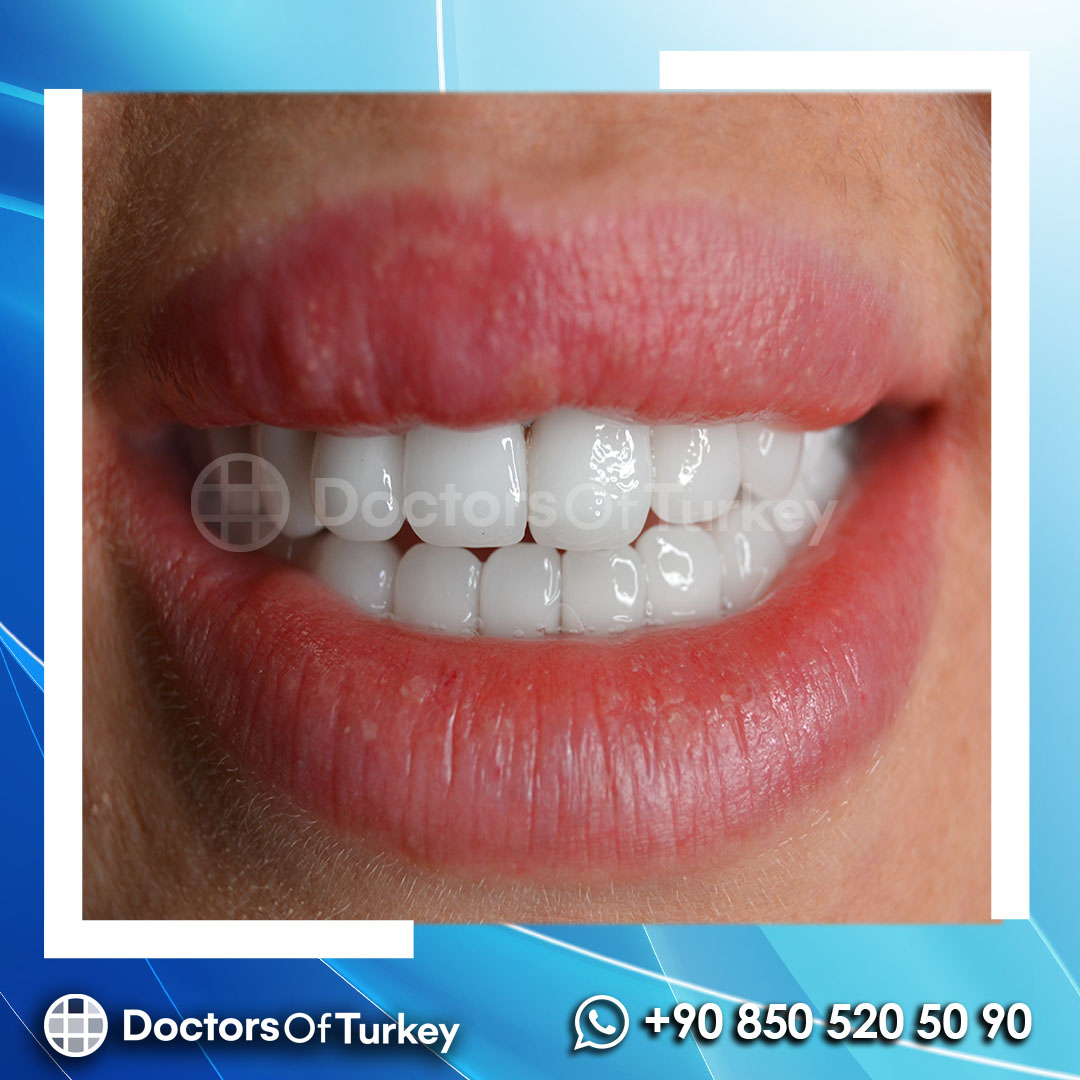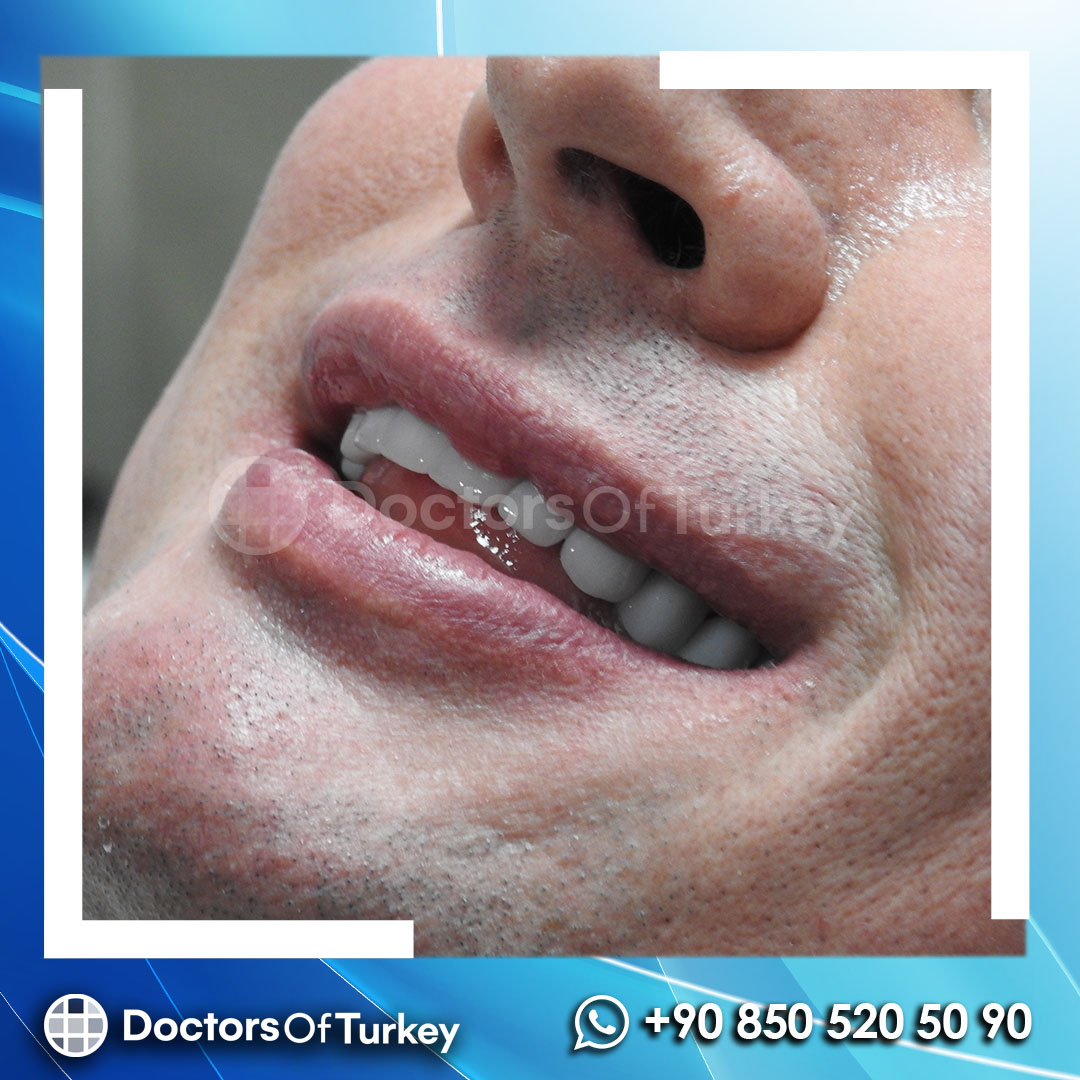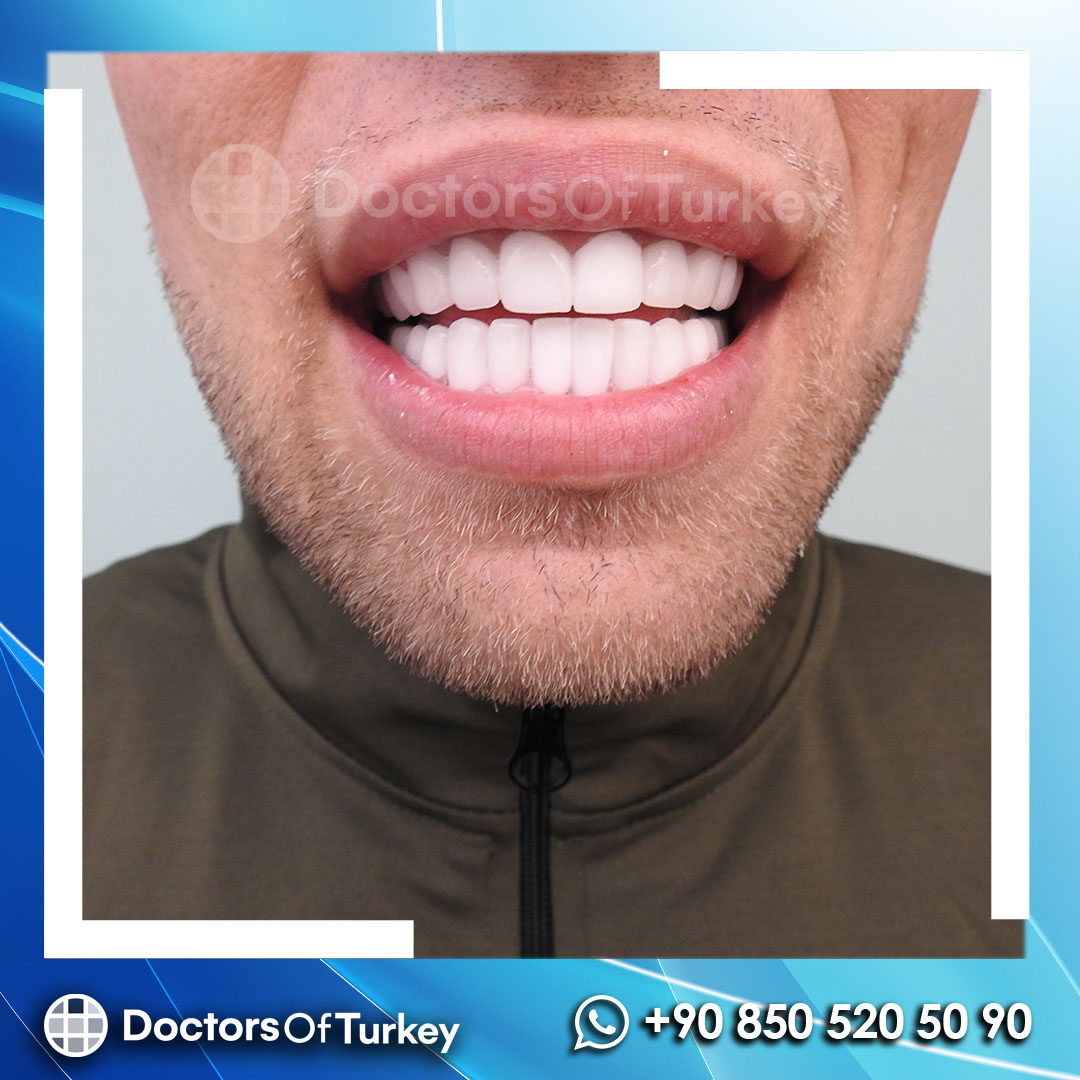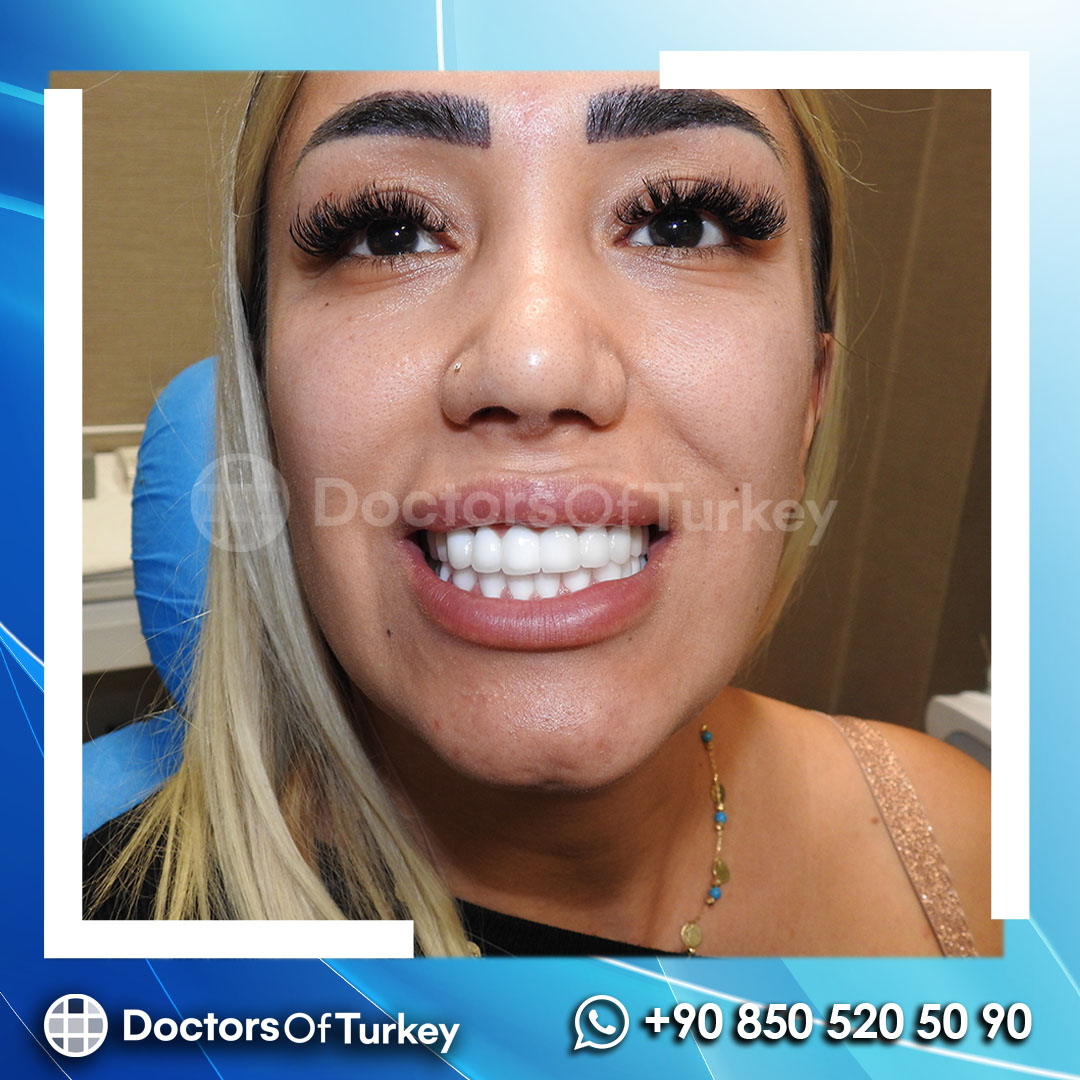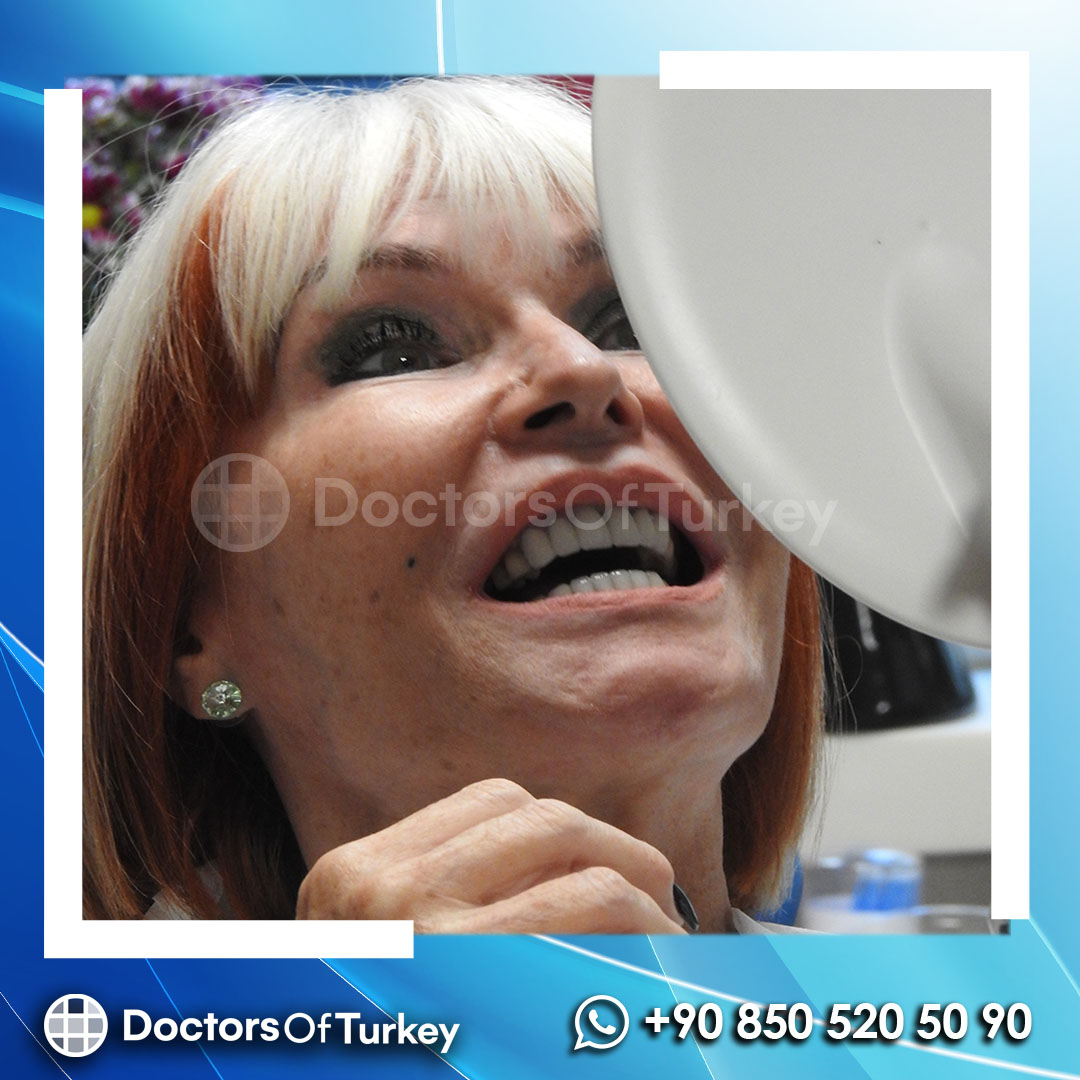Ceramic Crown
In full ceramic crowns that are frequently used in aesthetic dentistry; Glass-supported reinforced porcelain is used instead of the metal infrastructure that causes gingival discoloration and metal reflections in the future. The aesthetic success of glass ceramics, which has excellent light transmittance and light reflectivity, is quite high. All-ceramic crowns, which are frequently used especially in the anterior regions, provide a natural and aesthetic smile with their high resemblance to the natural tooth. These crowns are in the laboratory environment; It is produced with special techniques using computer aided, sensitive devices. Another advantage of full ceramics is that they are completely tissue-friendly and do not pose any risk of allergic reactions.
All-ceramic veneers give the best results in anterior incisors, where aesthetic concerns are prominent, and small molars that do not exert much force in the mouth. The most suitable solution for these two teeth is full ceramic veneers.
Reasons for Use of Full Ceramic Crown Veneers
- Since its light transmittance is perfect, it is a very natural aesthetic and long-lasting solution.
- It gives excellent results in unbleached teeth with discolored root canal treatment.
- It is used to close the gaps between adjacent teeth.
- Malformed teeth are used to give ideal form to teeth.
- It is used for both aesthetic and protective purposes in teeth with enamel defects (deficiencies or deformations in the protective layer of the tooth, such as enamel hypoplasia)
- It is done to give ideal alignment and position to malposed teeth (teeth with incorrect alignment and position).
- It is used on teeth that have undergone many restorations, discolored and lost their durability.
- It is used on worn or deformed teeth, which we call attrition, erosion or abrasion.
Advantages of Full Ceramic Crown Veneers
- It provides a natural appearance thanks to its color control.
- It has natural fluorescence feature. Since the color and surface structure can be controlled, the results are aesthetic and natural.
- Their retention is quite high
- Plaque accumulation is much less on the surface of well-polished all-ceramic coatings compared to other coatings. Therefore, it is ideal for periodontal health.
- It is resistant to abrasion.
- Liquid absorption is very low compared to alternatives.
Full Ceramic Crown Applications
Just like our other organs in our body, our teeth wear out over time, and our teeth change shape and color. In dentistry, the concept we call the vertical dimension (the part between the chin and the tip of the nose) begins to decrease with age. In parallel with this, the teeth begin to wear and discoloration occurs. As a result, the teeth begin to lose their vitality. In this case, thanks to the full ceramic crown coating, the vertical dimension is increased and the ideal size is regained. In this way, the deteriorated form and color of the teeth are also corrected. After the procedure, the young person gets a dynamic smile.
Due to the light transmission properties of metal-free porcelain crowns (full porcelain), their depth and vitality are greater, so that the closest results to natural teeth are obtained.
While full porcelains create an aesthetic very similar to natural tooth structure since they transmit light, there is a dullness and artificiality in metal porcelains, even if they are very well made. For this reason, full porcelains are preferred especially for anterior teeth.
Metal-supported porcelains give a dark space appearance in the mouth as if it were not present in some lights (disco, camera flash, etc.). Full porcelains, on the other hand, pass all kinds of light just like natural teeth (Translucense feature).
Metal-backed porcelains are mechanically bonded to the tooth. Full porcelain is attached to the tooth mechanically and chemically.
Since there is no metal in its substructure, there is no dark line at the crown-gingival level. A more aesthetic appearance is provided.
When the gingiva recedes, full porcelain preserves their aesthetic appearance, while metal porcelain creates a bad appearance in the area where they are combined with the tooth.
There is no risk of allergy to some metals used in the infrastructure (such as nickel allergy) in full porcelain.






















